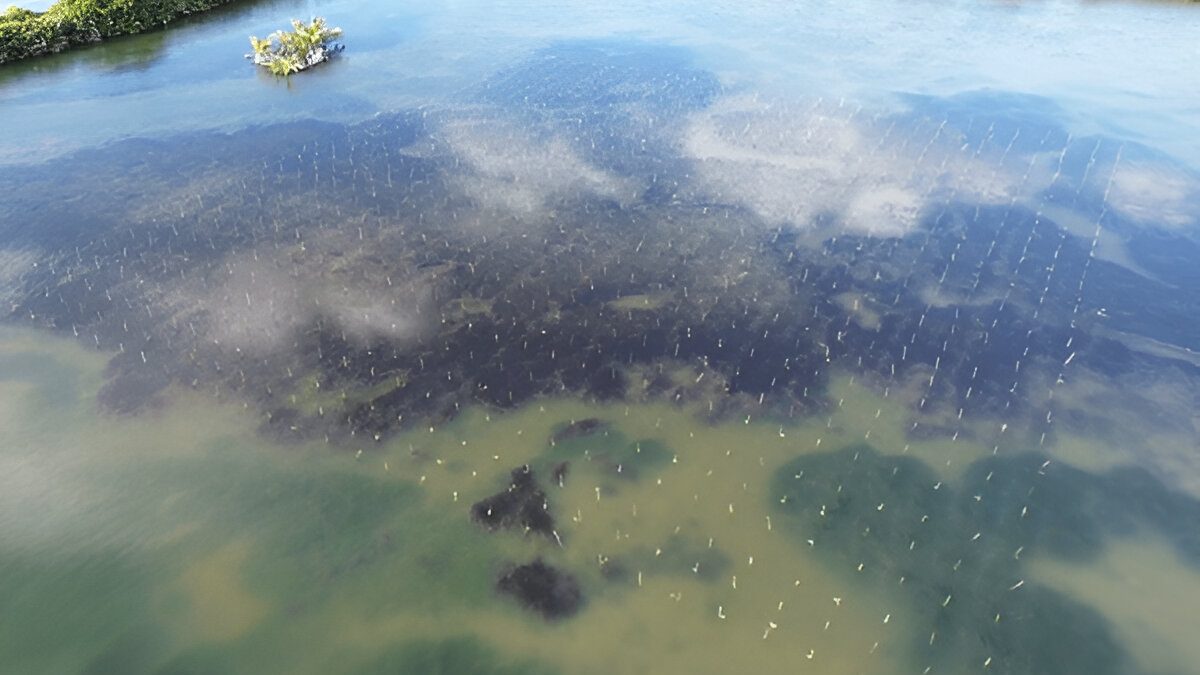Fish or Forest? How Silvofishery Brings Both Together

From Mangrove Forests to Fishponds
For decades, the story of Indonesia’s coasts has been one of trade-offs: fishponds or mangroves.
Back in the 1970s–1990s, aquaculture was booming in Indonesia. To meet demand for shrimp and milkfish, vast areas of mangroves were cleared to make traditional fishponds, or tambak in Indonesian language. The logic was simple; more ponds mean more fish.
However, the reality told a different story. Traditional ponds were built with simple mud dikes, often without proper planning for water exchange, soil preparation, or fertilization. Once the mangroves were removed, the land underneath often turned acidic because of sulfidic soils (commonly found in mangrove areas). This made ponds unstable, can be silted up quickly, the water became poor in oxygen, and disease spread easily among the fish and shrimp.
Instead of high yields, many ponds produced very little, often less than 300 kilograms of fish per hectare per cycle. For comparison, modern semi-intensive ponds can reach several tons per hectare. For coastal farmers, the low yields meant they were stuck in a cycle of hard work with little return.
And the cost was bigger than just poor harvests. By cutting down mangroves, farmers also lost the natural protection these forests gave:
- Stronger waves and erosion ate away at pond dikes and coastlines.
- The natural nursery grounds for wild fish and crabs disappeared.
- Huge amounts of blue carbon once locked in mangrove soils were released back into the atmosphere.
The result was a lose–lose situation: degraded ponds that could barely support livelihoods, and vanished mangroves that once protected and enriched the coastline.
The Cost of Clearing Mangroves
Losing mangroves didn’t just mean losing trees. It meant losing an entire life-support system along the coast.
Without mangrove roots holding the shoreline, coastal erosion and flooding became worse. Villages that once stood safely behind green belts of mangroves suddenly faced higher risks of storm surges and tidal flooding. In Java, for example, many coastal communities now experience rob (chronic tidal flooding) where mangroves used to stand.
The ecological damage also spilled into the sea. Mangrove creeks and roots are natural nursery grounds for shrimp, crabs, and juvenile fish. Once those habitats vanished, wild fish stocks declined, affecting both local fishermen and small-scale markets.
The damage was not only visible, but also invisible. Mangrove soils store massive amounts of blue carbon in their roots and sediments. When the trees were cut and ponds dug, this carbon was released back into the atmosphere as greenhouse gases (Sidik & Lovelock, 2013).
In the end, many coastal villages were left with unproductive ponds. The ponds yielded far below what families needed to survive, while the coastline lost the natural protection that mangrove forests once provided. It became both an ecological loss through erosion, declining fisheries, and released carbon, and an economic loss for local communities.
A New Model: Silvofishery
Silvofishery offers a new approach. Rather than forcing a choice between fish or forest, it combines the two, keeping mangroves standing while ponds remain productive. In this approach:
- Farmers keep part of their pond space for mangroves (usually 20–60% cover).
- The remaining area is used for fish, shrimp, or even polyculture (milkfish + shrimp + seaweed).
- The mangroves act as natural filters: trapping waste, stabilizing pond dikes, and improving water quality before it flows back to the sea.
This design allows the ecosystem to heal while still providing income for local communities. It is not only about producing fish, but also about producing a healthier coastline.
Beyond harvest, the benefits multiply:
- Mangroves protect pond dikes from erosion, meaning lower repair costs for farmers.
- They improve water circulation, reducing the risk of disease.
- Healthy mangroves bring back crabs, shellfish, and wild fish that can be caught as extra income.
- On a bigger scale, silvofishery opens the door to eco-certification and carbon credit programs — connecting small farmers with global markets that value sustainability.
The Way Forward
- Silvofishery is not a magic bullet. It needs good pond design, farmer training, and supportive policies. But it carries a powerful message: Indonesia does not have to choose between fish or forest.
- When farmers integrate mangroves with their ponds, they gain healthier harvests, stronger protection from erosion, and a more sustainable future for their families. For coastal villages, silvofishery means food and income security without destroying the ecosystems that support them.
- The next step is to make silvofishery more than just small trials. With stronger collaboration between communities, government, and NGOs, this model can grow into a national movement — proving that people and nature can thrive together along Indonesia’s coasts.

